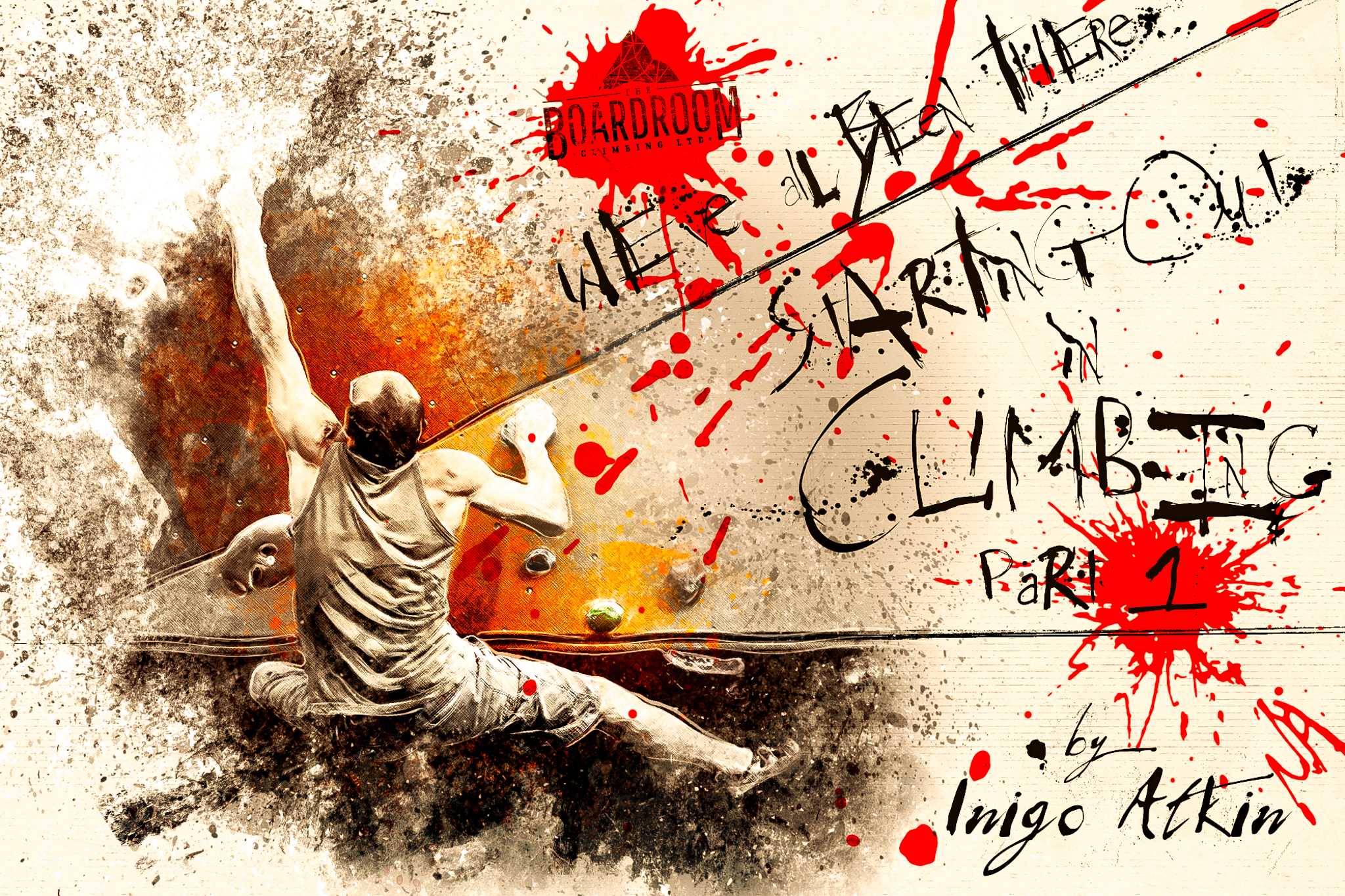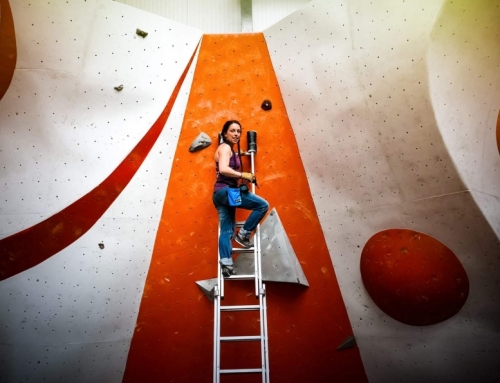I had been climbing for about a year when I discovered an awkward truth: despite not being scared of heights and loving climbing on ropes, I couldn’t jump off a bouldering wall. Of course, this did not occur to me on the ground. It occurred to me while I was at the very top of the bouldering wall, leaning precariously towards a seemingly awful sideways fall.
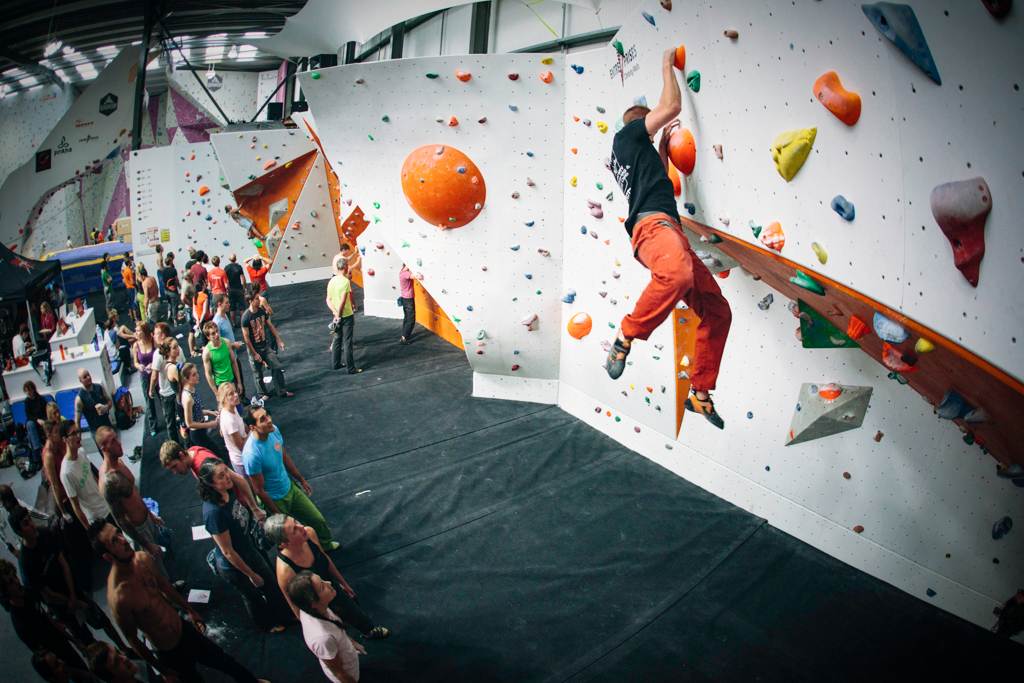
~Getting high and sideways, bouldering at The Boardroom!
After dithering for quite a while and getting very scared…
it became clear my only choice was to let go. When I eventually did, I landed fine – but I kept finding myself in similar positions over the next few months, with similar pangs of fear. The fear of falling off the top of a bouldering wall is a pretty legitimate one – more injuries occur when people fall off bouldering walls than anywhere else in a climbing centre, so it wasn’t unreasonable of me to feel like that. Overcoming that fear became a big part of learning to climb, and wanting to go climbing more often.
The fear of falling off the top of a bouldering wall is a pretty legitimate one
Fear is a part of climbing…
but luckily it doesn’t have to be a big part or a limiting factor. Our brains are good at learning fast – we come up with tactics to forget or avoid the fear. Practicing these can be as effective as physical training!
Here’s a couple of other thing that you might be worrying about…
Fingers. They ache, don’t they? Actually they ache a LOT. If you’re asking yourself whether this is normal, don’t worry – it is. Everyone’s fingers hurt – whether it’s your skin or the muscles in your hand and wrist, something will be complaining most of the time.
Everyone’s fingers hurt – whether it’s your skin or the muscles in your hand and wrist, something will be complaining most of the time.
Luckily, if you’re reading this and you’ve only been climbing a few times – it does get better. The first few sessions are often the most uncomfortable – when you feel like you can only hold on for a few goes. After that, the sensation improves considerably!
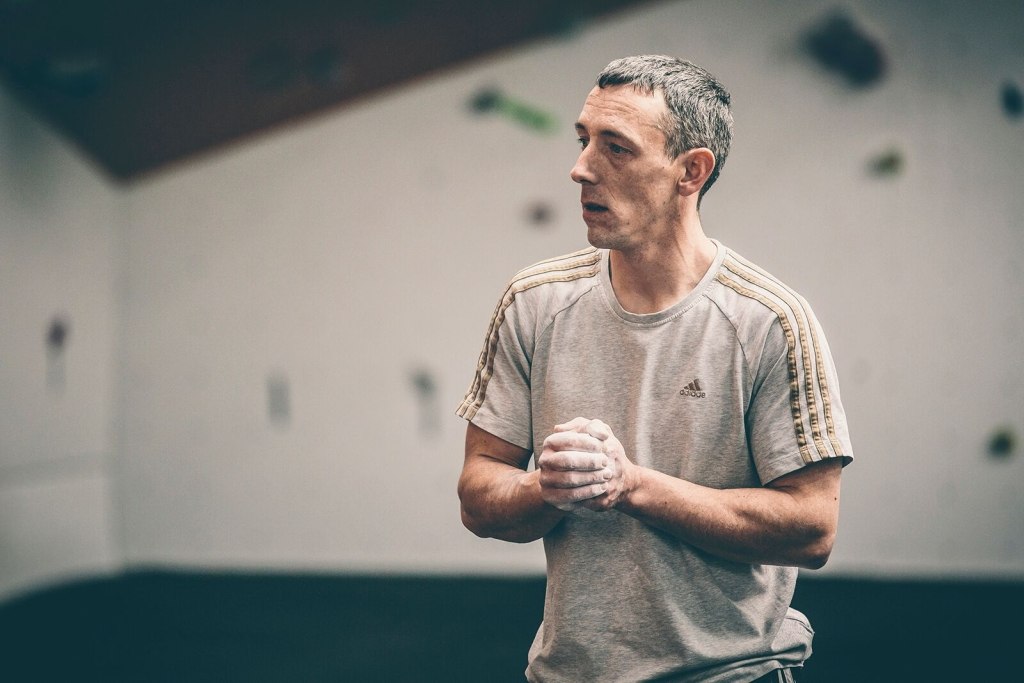
~Massaging hands during a session at The Boardroom
Shoes. Using a hire pair? Don’t fit well? Want to upgrade…
…it’s a standard dilemma. There will be several articles on the Boardroom website that deal with shoes at a later date, but for now check out the video below on choosing climbing shoes and look out for the upcoming articles. You can also speak to staff who will be able to point you in the right direction. Shoes are one of the biggest decisions you can make when starting out as a climber – better to get it right the first time!
Shoes are one of the biggest decisions you can make when starting out as a climber
One final hurdle that loads of climbers struggle with is another mental one, like fear. Unless you’re very very lucky, you will feel like your climbing improves slowly, in fits and starts. It’s sometimes referred to as reaching a plateau. In fact, that probably isn’t happening at all, especially when you start out. But the problem is that with climbing it can be quite difficult to tell how you’re doing. For example, you might be able to ace a V4 on a slab after a year of climbing, because your ninja footwork makes that stuff easy. But after another year of climbing regularly, you might fall off a V4 in the overhang repeatedly, because you haven’t yet sculpted your Superman biceps.
This happens to everyone – it doesn’t mean you haven’t improved in a year. Climbing is a unique activity because all the movements are so individual – it’s easy to find things that will challenge you, because there are so many different things to try. And worry not – the Boardroom is here to help. There are coaching sessions, both free and paid for, that can help you work on areas where you’re struggling, and if you really feel like you need a boost, training programs as well. Mainly though, the key is to stick at it, and you’ll soon see the numbers you can climb creeping up.
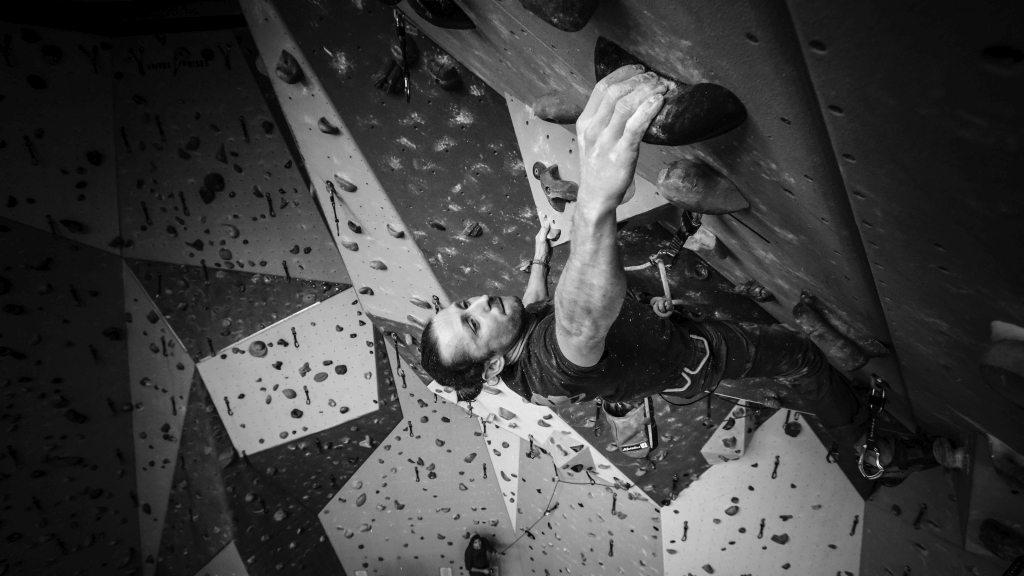
~Nick Moulden on a project in The World of Steep at The Boardroom
